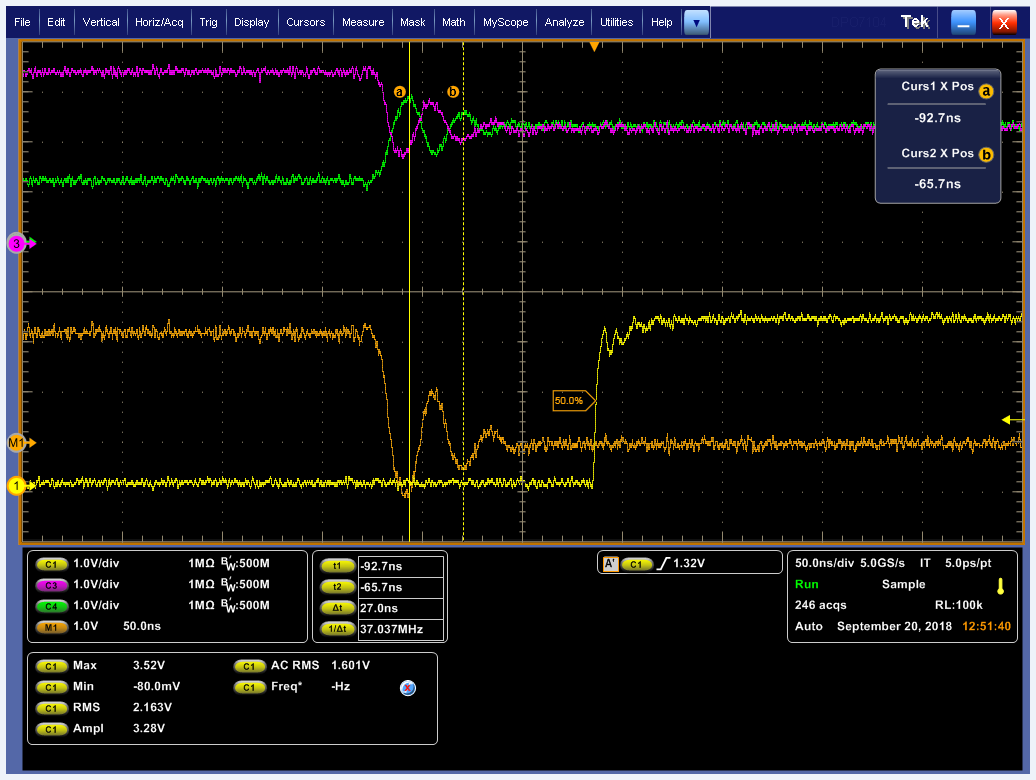Hi team,
My customer use the ISO1050 to isolate the can node and can bus.
below is the schematic:
But they find the ringing in the falling edge, as below:
The purple is CANH, green is CANL, orange one is CANH-CANL, yellow one is RX.
After they short the Ferrite bead, the ringing issue has improve. See below:
The inductor value of the Ferrite bead is about 0.8uH
Can you help to comment if the ringing is caused by the Ferrite bead?
Please help to analyze the solution to fixe the ringing of the signal.
Lacey
Thanks a lot!




